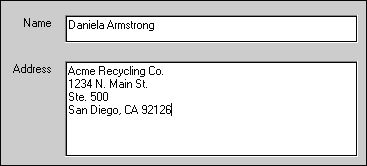Entry Field

An ENTRY-FIELD control is a region in which the user can enter or modify text. While entry fields are one of the simplest controls, they are also one of the most complex because of the large number of options that affect them.
Entry fields can occupy multiple lines on the screen. For multiline entry fields, the system automatically performs word wrapping when the user enters data into the field. For single-line entry fields, the system automatically performs horizontal scrolling when the user enters more text than the field can display.
Many editing keys are available to modify the text. These editing keys are defined by the host graphical system, and cannot be defined by your KEYSTROKE configuration entries. For example, under Windows, when the cursor is in an entry field, the left-arrow key moves the cursor to the left in the field. If the left-arrow key is redefined in the KEYSTROKE file to perform another function, that function is ignored while the cursor is in the entry field.
Character-based systems support two ways for users to insert data into an entry field: insert mode and overtype mode. Windows systems support one mode for users to insert data into an entry field: insert mode. By default, character-based systems use overtype mode. If you are running your application on a character-based system and would like Windows-style behavior (insert mode) for your users, you must set the INSERT_MODE runtime configuration variable, or have users press the <Insert> key.
Entry fields are limited to 32K bytes of text. Memory is allocated as needed.